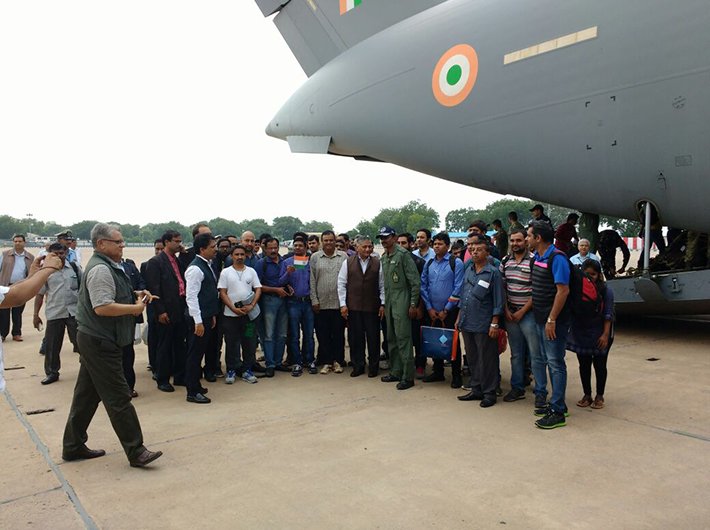The first set of 156 Indian nationals was evacuated from conflict ridden South Sudan on Friday. Let us look at some of the other evacuation plans seen in history
Strife-torn South Sudan is witnessing a heavy fight between former rebels and government soldiers. In 2011, South Sudan split from its northern neighbour, Sudan, in a contentious separation after more than 20 years of guerrilla warfare. It has claimed the lives of millions of people and has resulted in displacement of a large population.
In lieu of this, India has put in place an evacuation plan for its nationals from South Sudan. It has also advised Indians not to travel to the war-torn country.
According to official data, there are a few hundred Indians in South Sudan. Some have set up businesses in its capital Juba and others are working for various companies. Some Indian nationals are also working in Christian missionary organisations over there.
The evacuation operation of Indians has been named as 'Sankat Mochan’ and is being headed by minister of state for external affairs General (retired) VK Singh who had gone to Juba and accompanied the first set of 156 Indians who were evacuated. The first flight carrying them reached India on Friday morning. Indian nationals were ferried back to the country by Indian Air Force carrier C-17 Globemasters which first landed in Thiruvananthapuram and then flew to Delhi.
Singh, on arriving in Thiruvananthapuram, told media persons that a total of 550 Indians are in South Sudan. Of them, 156 have been flown back to India in the first flight. Another 30 to 40 persons have already booked tickets for their return to India by commercial flights and about 300 others are not willing to return right now.
According to a report in The Hindu, on Sunday, the Indian embassy in South Sudan had asked the stranded Indians to stay calm, assuring them that they are in constant touch with authorities in India and all options are being considered to provide relief to them amid heavy fighting.
This is not the first time that India has had to prepare evacuation plans to rescue Indian nationals from conflict-hit countries.
Here is a recap:
Yemen
In 2015, operation Raahat of the Indian Armed Forces was conducted to evacuate Indian citizens and other foreign nationals from Yemen. This was during the military intervention by Saudi Arabia and its allies in the country. The evacuation done by sea started on April 1 in 2015 from Aden port. The air evacuation was started by Indian Air Force and Air India on April 3, 2015 from Sanaa. More than 4,640 Indian citizens in Yemen were evacuated along with 960 foreign nationals of 41 countries. The air evacuation ended on April 9 while the evacuation by sea ended on April 11.
Ukraine
Eastern Ukraine was witnessing a fierce escalation of violence after Russia annexed Crimea – an autonomous peninsula within Ukraine with a Russian ethnic majority – in March 2014 following which pro-Russian rebels seized control of parts of eastern Ukraine and demanded its independence. Arrangements were made for evacuation by the Indian embassy and Ukrainian authorities including officials of Lugansk State Medical University, where many Indians were studying. There were around 1,140 Indian nationals in Lugansk and 4,000-5,000 in Ukraine.
Kuwait
In 1990, Indians were airlifted from Kuwait. The operation was carried out from August to October. The invasion of Kuwait started on August 1 and within two days of combat, most of the Kuwaiti armed forces were either overrun by the Iraqi Republican Guard or fell back to Saudi Arabia and Bahrain. Air India helped evacuate 1,75,000 people by a civil airliner and 500 people were sent through a ship. The operation was carried out during the Persian Gulf War in 1990 to evacuate Indian expatriates from Kuwait. The Indians based in Kuwait also helped in the evacuation efforts.
